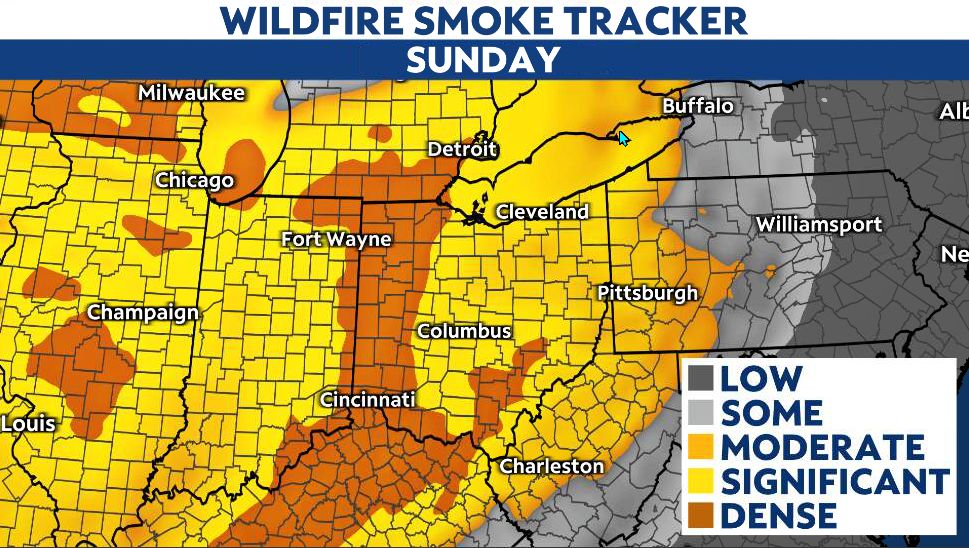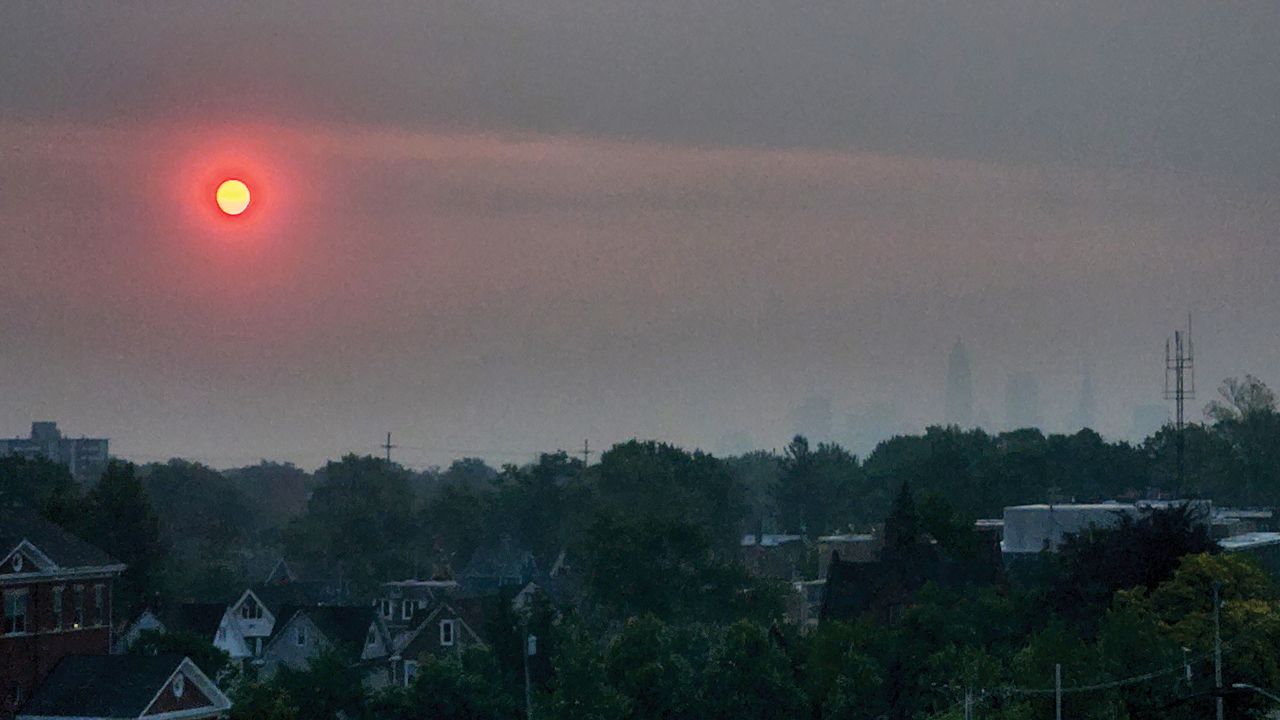Here we go again. Get ready for smoke-filled skies to return before the weekend is over.
Smoke from massive wildfires burning in Canada will return to the Ohio Valley on Sunday. The smoke has already dropped into the northern U.S., crossing into the Dakotas and Minnesota.
)
Earlier in June, smoke from fires in Quebec made for some of the worst air quality in the world for areas such as Minneapolis, Chicago, Cleveland and New York City.
However, this outbreak of unhealthy wildfire smoke is coming from fires burning in British Columbia and Alberta.
The smoke will likely lead to milky-colored skies and reduced visibility. This is because smoke primarily consists of particles and can include other gaseous air pollutants that contain nitrogen oxides, carbon monoxide, and hydrocarbons.
The invisible fine particles in smoke, measuring less than 10 microns, can lodge deep into the lungs and cause serious health issues. This includes severe asthma, nose and throat irritation, bronchitis and lung damage.
Some particles may even get into your bloodstream and affect your heart. Visible dust and smoke can also contain particles larger than 10 microns, which could also irritate the eyes, nose and throat. Although these are usually less of a threat to your lungs and heart.
Given the weather pattern, the smoke will likely stick around through early next week. With that, much of the Ohio Valley, Great Lakes and New England will deal with poorer air quality over the next couple of days.

Those with health issues should monitor the latest air quality forecasts.
With many of the Canadian wildfires still burning out of control, the smoke will continue to impact parts of the northern U.S. in the months ahead as weather patterns allow.
Our team of meteorologists dives deep into the science of weather and breaks down timely weather data and information. To view more weather and climate stories, check out our weather blogs section.



